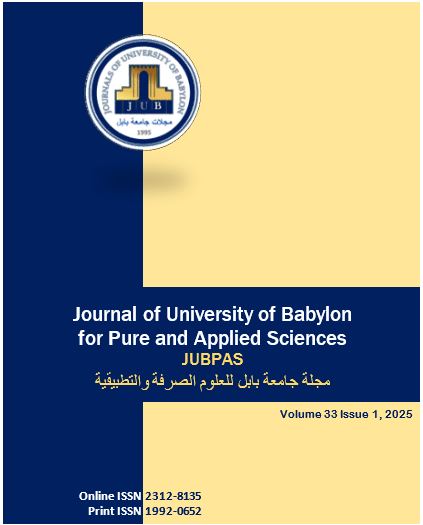A Study of the Structural, Optical, Properties of Au/CdS Films Prepared by Laser Pulsed Deposition Method
Main Article Content
Abstract
Background:
Numerous studies have confirmed the importance of manufacturing solar cells and photodetectors as well as different types of sensors. This is due to their essential rolls in many industries.
Working methods:
Two materials, gold (metal) and cadmium sulfate were used, which waspowder pressed at 15 megapascals pressure in a disc form with a 2 cm diameter.(PLD) technique was used to form thin films, where the number of pulses was changed and the laser power was fixed at 100 millijoules with a 1064 nanometers wavelength.
Results:
Au/CdS film exhibited a polycrystalline structure with a hexagonal lattice, The presence of gold in the CdS material resulted in very low lattice strain, as the atomic radii of CdS (0.154 nm) and Au (0.165 nm) are closely matched
Conclusions:
This study revealed The possibility of manufacturing cadmium sulfate films with Au by thermal diffusion method. The current and voltage values of the prepared solar cell increase with the increase of the layers of thin films on the surface of the solar cell, thus increasing the lighting current, as direct energy transfer occurs. X-ray examinations of the films prepared by the pulsed laser deposition method showed that they have a polycrystalline structure and a hexagonal lattice. The films prepared in the case of CdS-Au showed the size of the grains of the thin films increases with the increase of the laser energy and the number of pulses. We also note that the surface roughness decreases with the decrease of the concentration.
Article Details
Issue
Section

This work is licensed under a Creative Commons Attribution 4.0 International License.
